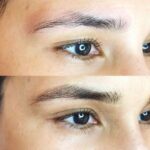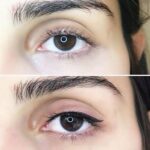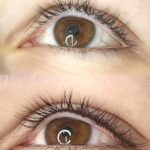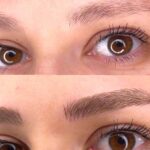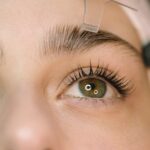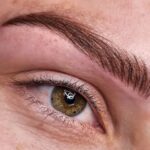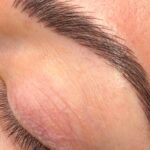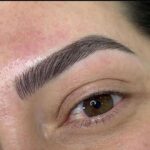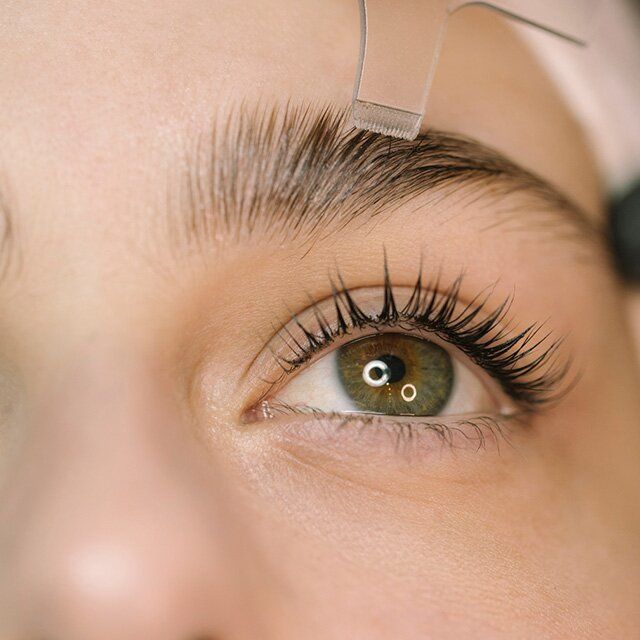
Eyebrow feathering is a popular semi-permanent makeup technique that enhances the shape and fullness of your brows. While many people experience stunning results, some may face issues post-procedure, leading to frustration. In this article, we’ll explore the most common problems encountered with eyebrow feathering and provide practical solutions to fix them, ensuring you achieve the gorgeous brows you desire.

The Most Common Issues with Eyebrow Feathering
Understanding the shortcomings of eyebrow feathering procedures can help you better prepare and manage expectations. Here are several common issues clients may face:
- Uneven Color: Mismatch or fading can lead to brows appearing patchy.
- Overly Dark or Light Tint: Sometimes the tint doesn’t match skin tone, leading to a jarring appearance.
- Shape Mistakes: A poorly designed shape can detract from facial features.
- Pigment Migration: Color may spread beyond the intended area, resulting in a blurred look.
- Allergic Reactions: Sensitive skin may react negatively to pigments.

Fixing Uneven Color
Uneven color is one of the most frustrating issues to encounter after an eyebrow feathering session. It often results from different skin types absorbing pigment unevenly. To address this, consulting with your technician is essential, as they can assess the situation properly. One common solution is to schedule a touch-up appointment, where the technician can add more pigment to lighter areas. It’s also crucial to follow aftercare instructions diligently, as this can affect the healing process and the final color outcome. In some cases, a color correction may be necessary, which can involve lighter or darker pigments to balance out your brows. Additionally, using makeup strategically can help mask unevenness while your eyebrows heal.

Addressing Overly Dark or Light Tint
When clients leave the salon with brows that are too dark or too light, it can be disheartening. If your brows appear darker than expected, allow them to fade over time since semi-permanent pigment naturally lightens. However, if the tint is too light and doesn’t provide the desired definition, consider a follow-up appointment with your artist for adjustments. They may suggest a color boost or tinting session to enhance the color. Always communicate your preferences and concerns clearly, so your technician can tailor their services to your needs. Remember, pigment fading often occurs during the healing process, so waiting a few weeks to reassess the situation may yield better results.
Correcting Shape Mistakes
Shape mistakes can often stem from miscommunication with your technician or a misunderstanding of your facial structure. If your brows look out of proportion or aren’t the shape you envisioned, there are several fixes. Initially, you can try to balance the shape with makeup until they fade. Consider consulting your artist about microblading correction techniques they might offer. These professionals can often reshape the brows by re-defining the lines and placing fresh pigment accordingly. If too much pigment has been applied or if the initial design was too drastic, removal options like saline solution or laser treatment can be explored. Always proceed with caution and seek professional guidance when altering your brows post-procedure.
Pigment Migration: What to Do
Pigment migration occurs when the dye spreads beyond the intended area, leaving a blurred effect. This can happen if there is excessive touch, skin type, or healing improperly. To fix this, applying an ointment recommended by your technician can help reduce inflammation and potential further migration. If the issue persists, reach out for a professional corrective treatment. Doctors may use more advanced techniques like laser therapy to target the area. Limit sun exposure and avoid harsh skin products, as these can aggravate the issue and cause further migration. Keeping your skin hydrated and using gentle cleansers can also contribute to healing.

Managing Allergic Reactions
Allergic reactions are perhaps one of the more severe issues that can arise post-eyebrow feathering. Symptoms can range from redness and swelling to itching and peeling. If you suspect an allergic reaction, seek immediate medical attention, especially if the reaction is severe. For minor reactions, over-the-counter antihistamines and topical steroids can help alleviate symptoms. Opt for healing ointments designed for sensitive skin to promote recovery and reduce irritation. Inform your technician for future reference, as they can adjust products for your needs. Always conduct a patch test before any chemical procedure to ensure compatibility with the pigments used.
Conclusion
Eyebrow feathering can be a game-changer for your appearance, but it’s essential to address common issues quickly and effectively. Understanding possible challenges, from uneven color to shape mistakes and allergic reactions, allows you to stay prepared and proactive in achieving the flawless brows you desire. Regular communication with your technician and following aftercare instructions can significantly improve your outcomes. Should any complications arise, remember that many solutions are available, ensuring your eyebrows enhance your natural beauty rather than detract from it.
FAQs
Generally, eyebrow feathering lasts between 1 to 3 years, depending on skin type, aftercare, and pigments used.
2. Can I remove eyebrow feathering if I don’t like it?
Yes, there are removal options like saline solutions or laser treatments that a licensed professional can perform.
3. What is the healing process like for eyebrow feathering?
The healing process typically takes 4-6 weeks and involves a scabbing phase where the flakes will gradually diminish and reveal the final result.
4. Is eyebrow feathering safe for everyone?
Though generally safe, individuals with specific skin conditions or allergic reactions should consult a professional before proceeding.
5. How can I prevent pigment migration after brow feathering?
Following aftercare instructions, avoiding excessive moisture, and using a gentle skincare routine can help reduce the risk of pigment migration.
